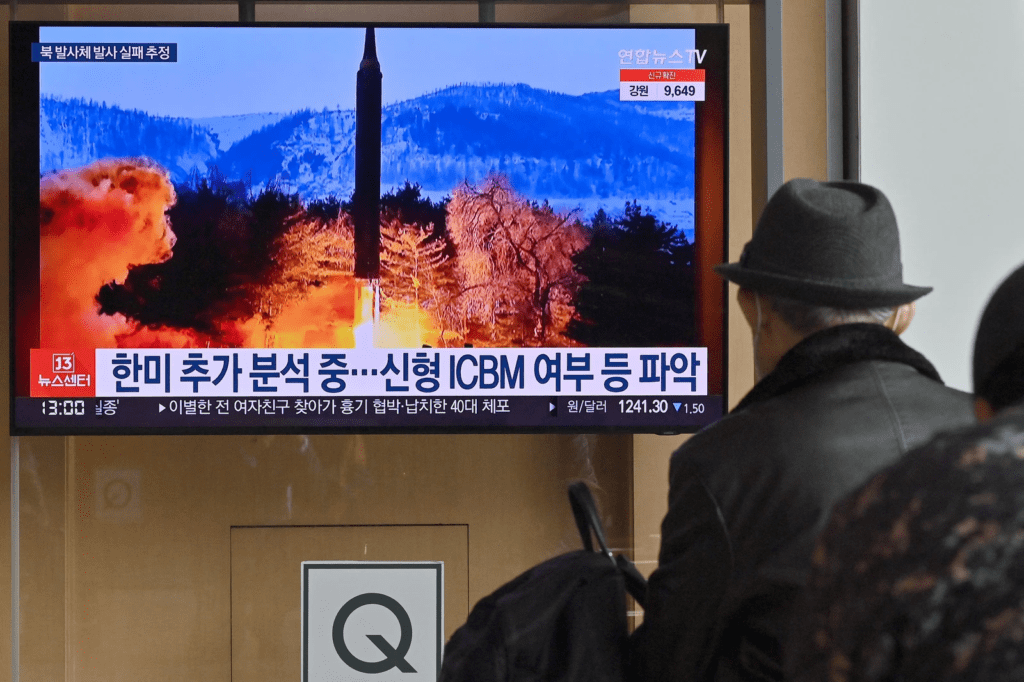This article was originally published on Vice News.
North Korean supreme leader Kim Jong Un’s regime has conducted missile tests almost every week since the start of 2022.
How will Americans know when North Korea has developed nukes that could strike the United States? A missile defense expert was once asked. He shrugged and said, “Well, you’re going to see a bright light.”
The answer speaks to the uncertainty of whether Pyongyang can actually defeat U.S. defense systems and drop a nuclear warhead on the country. But this catastrophic possibility alone is precisely why the small and isolated country is able to threaten the world’s dominant power from afar—and why North Korean leader Kim Jong Un has shown little interest in giving up its arsenal of missiles and nuclear bombs despite United Nations sanctions that have hamstrung its economy.
On the contrary, North Korea has continued to test a range of missiles, including those capable of hitting continental U.S.
Barely three months into 2022, Pyongyang has already conducted 10 missile tests—more than it did in all of 2021. The latest one took place on March 16, when it tested a ballistic missile, according to the U.S. Indo-Pacific Command. The increasingly frequent weapon tests prompted U.S. forces stationed in South Korea to ramp up readiness.
Recent satellite images have also shown signs of renewed activity at North Korea’s main nuclear-testing site, Punggye-ri, which Pyongyang blew up in 2018 ahead of disarmament talks with then-U.S. President Donald Trump that eventually broke down.
Pyongyang has tested nukes six times, most recently in 2017. With Russia issuing veiled threats of nuclear war over the Western response to its invasion of Ukraine, a resumption of nuclear testing in North Korea could further complicate the global security environment.
Why Is North Korea Testing Missiles?
Pyongyang has put military capabilities at the center of its foreign policy and has developed a variety of weapons, from short-range missiles to thermonuclear bombs.
Boasting a large arsenal has become a source of national pride for North Korea, as it hopes to gain equal footing with its ultimate rival, the United States. It can also leverage its capabilities in international negotiations.
By developing weapons of mass destruction, North Korea hopes to prove to other nations that it is a legitimate power not to be taken lightly. Kim Jong Un frequently attends missile launches and takes pride in Pyongyang’s military breakthroughs, which all help maintain his image as an invincible ruler.
Pyongyang also thinks it can’t survive without nuclear weapons. As an isolated state with an unstable economy, North Korea is surrounded by far more powerful rivals, such as South Korea and Japan. Having nuclear capability could help North Korea deter attacks.

How Did North Korea Get Its Nukes?
North Korea first started getting its supplies in the 1960s from the Soviet Union. Afraid it could lag behind South Korea after the Korean War, Pyongyang agreed to peaceful development programs with the Soviet Union and, in return, received a nuclear research reactor, missile designs, and some nuclear fuel.
In the 1970s, North Korea began cooperating with China and Pakistan to develop ballistic missiles. Pyongyang would also acquire Pakistani centrifuge technology in the 1990s, necessary to develop nuclear bombs.
Now, the dictatorship may have up to 60 nukes in its arsenal, according to U.S. intelligence officials.
Is North Korea Dangerous?
Pyongyang has regularly issued threats of force, often in response to sanctions, criticism of its human rights abuses, and joint military exercises conducted by the U.S. and its ally South Korea.
It has never followed through on its threats of nuclear annihilation, in good part because that would invite an overwhelming counter strike. But North Korea has steadily grown its capabilities and weapon tests over the years.
The U.S. State Department estimates that the country, one of the poorest in the world, spends nearly a quarter of its gross domestic product (GDP) on its military. North Korea now has the world’s fourth largest military in terms of active personnel, behind China, India, and the U.S.
The country has conducted a total of 137 missile launches since 1984, 102 of them after Kim Jong Un took power in late 2011, according to a database maintained by the Washington-based Center for Strategic and International Studies.
Significantly, in 2017, North Korea tested a nuclear weapon 10 times more powerful than the ones that devastated the Japanese cities Hiroshima and Nagasaki at the end of World War II. The underground test, the detonation of a hydrogen bomb that could fit on the country’s intercontinental ballistic missiles, caused tremors detectable from as far as South Korea and China.
To read more, please click here.


